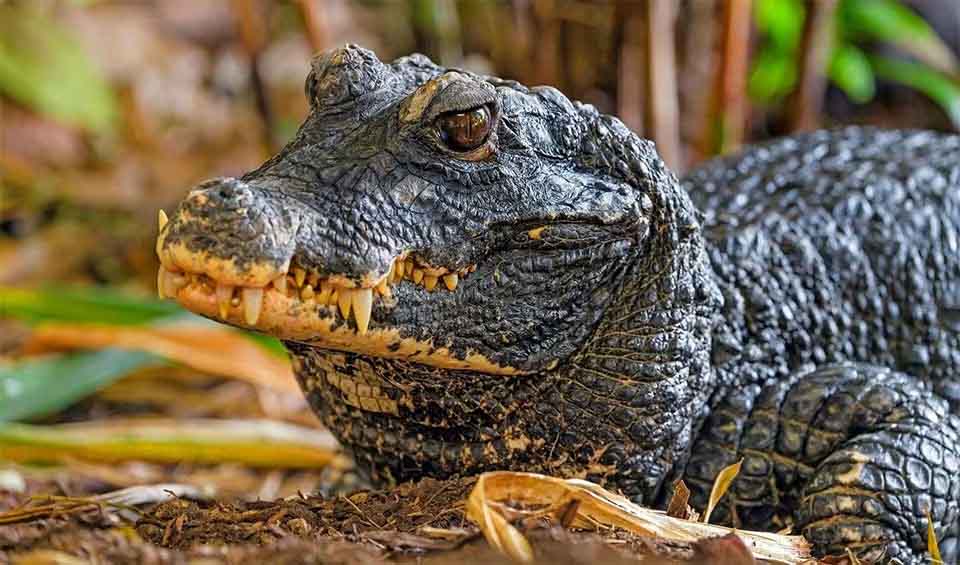African dwarf crocodiles, once assumed to be a single species, are now believed to represent two separate species. Despite their diminutive size, these crocodiles have a rich evolutionary history that dates back over 20 million years when they diverged from their closest relatives, the slender-snouted crocodiles. With their maximum length rarely exceeding 1.5 meters (4.9 ft), African dwarf crocodiles are among the smallest crocodilians in the world.
These crocodiles inhabit a variety of freshwater and brackish habitats across West Africa, including mangrove swamps, rainforests, and slow-moving rivers and streams. Their predominantly nocturnal habits see them spending much of the day resting in burrows or concealed within dense vegetation along the water’s edge, emerging under the cover of darkness to hunt and forage for food. Despite their small size, African dwarf crocodiles play a significant ecological role within their ecosystems, contributing to nutrient cycling and maintaining balance within aquatic food webs.
However, African dwarf crocodiles face numerous threats to their survival, primarily driven by human activities. The widespread hunting of these crocodiles for bushmeat and commercial trade poses a significant challenge to their populations, with their meat being highly valued and sought after in local markets. Additionally, habitat loss and degradation due to deforestation, urbanization, and agricultural expansion further exacerbate the pressures on these species, leading to habitat fragmentation and dwindling population numbers.
Distribution
 Angola
Angola Benin
Benin Burkina Faso
Burkina Faso Cameroon
Cameroon Central Af. Rep.
Central Af. Rep. Congo-Brazzaville
Congo-Brazzaville Côte D’ivoire
Côte D’ivoire DR Congo (Kinshasa)
DR Congo (Kinshasa) Gabon
Gabon Gambia
Gambia Ghana
Ghana Guinea-Bissau
Guinea-Bissau Guinea
Guinea Liberia
Liberia Nigeria
Nigeria Senegal
Senegal Sierra Leone
Sierra Leone Togo
Togo Uganda
UgandaAnything we've missed?
Help us improve this page by suggesting edits. Glory never dies!
Suggest an editGet to know me
Terrestrial / Aquatic
Altricial / Precocial
Polygamous / Monogamous
Dimorphic (size) / Monomorphic
Active: Diurnal / Nocturnal
Social behavior: Solitary / Pack / Herd
Diet: Carnivore / Herbivore / Omnivore / Piscivorous / Insectivore
Migratory: Yes / No
Domesticated: Yes / No
Dangerous: Yes / No





